Mariano’s Woman selected as finalist by Colorado Author’s League Book Award
 One of three finalists for the 2020 award for historical fiction.
One of three finalists for the 2020 award for historical fiction.
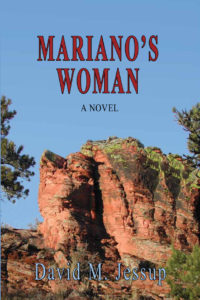
 One of three finalists for the 2020 award for historical fiction.
One of three finalists for the 2020 award for historical fiction.

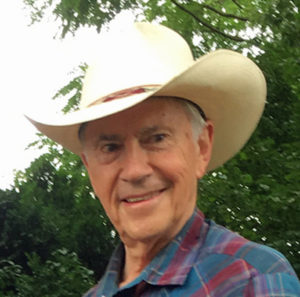 The owner of the White Stallion Ranch in Tucson, Arizona, Russell True, interviewed me on his “Cowboy Up” podcast on February 19, 2021. We talked about the historic characters in my novels, our family’s Sylvan Dale Guest Ranch where I grew up, using grass-fed cattle to improve the landscape, the Big Thompson River floods, and my teen-age trauma with Baronet Bars, our breeding-compromised quarter horse stallion. You can tune into it here.
The owner of the White Stallion Ranch in Tucson, Arizona, Russell True, interviewed me on his “Cowboy Up” podcast on February 19, 2021. We talked about the historic characters in my novels, our family’s Sylvan Dale Guest Ranch where I grew up, using grass-fed cattle to improve the landscape, the Big Thompson River floods, and my teen-age trauma with Baronet Bars, our breeding-compromised quarter horse stallion. You can tune into it here.
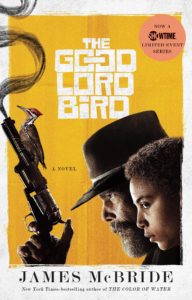 I love writing historical fiction. Digging up dry bare bones of long-dead people and reassembling them with imagined personalities, motives and quirky character traits. In both the writing and the reading, one can break the chains of current reality and escape, Houdini-like, into an imagined fantasy world. At the end, most authors bring you back to earth with an “Afterword” or “Author’s Note” that distinguishes fact from fiction.
I love writing historical fiction. Digging up dry bare bones of long-dead people and reassembling them with imagined personalities, motives and quirky character traits. In both the writing and the reading, one can break the chains of current reality and escape, Houdini-like, into an imagined fantasy world. At the end, most authors bring you back to earth with an “Afterword” or “Author’s Note” that distinguishes fact from fiction.
Not so with James McBride’s The Good Lord Bird. This rousing romp through John Brown’s quixotic and bloody attempt to liberate slaves at Harper’s Ferry in 1859 left me breathlessly scanning Wikipedia entries to figure out what was real and what was fake.
McBride’s fictional narrator is a young Negro boy nicknamed “Onion,” who dresses like a girl, gets “adopted” by Brown and dragged into the “Old Man’s” hardscrabble army of liberation. More worried about saving his own skin than freeing his fellow slaves, Onion regales us with canny observations of the real people and events in the story, along with a whole dictionary’s worth of memorable metaphors. Of Brown’s mentally-challenged son Fred, Onion tells us “his brain was muddy. His cheese had pretty much slid off his biscuit.” Getting hunted by pro-slavers, he(she) quips, “weren’t a notion that throwed a lot of sugar in my bowl.”
Through Onion’s eyes we witness the slow unwinding of John Brown’s bible-inspired dream of provoking a massive slave rebellion. His followers split into realists who abandon the cause, and true believers who stay devoted to the disastrous end. Brown clings ever more fervently to his alternate reality even as his fantasy world washes away in a flood of facts.
Kind of like our soon-to-be former President.
But there the similarity ends. As Onion tells us, “the Old Man was a lunatic, but a good, kind lunatic…he had the weight of my people on his shoulders. It was him who left house and home behind for something he believed in.”
Funny, sad, and at times profound, this book definitely belongs on your reading list.
David Jessup, December 15, 2020
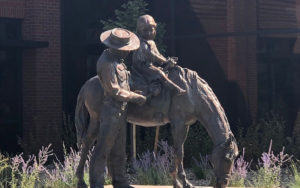 This beautiful statue of Mariano Medina and his daughter Lena, created by gifted sculptor Jane Dedecker, was installed at the new Larimer County building in Loveland, Colorado, in May 2018. As much as I love the piece, I wish Lena’s mother, Takansy, were also present. She is the main character in my latest historical novel, Mariano’s Woman.
This beautiful statue of Mariano Medina and his daughter Lena, created by gifted sculptor Jane Dedecker, was installed at the new Larimer County building in Loveland, Colorado, in May 2018. As much as I love the piece, I wish Lena’s mother, Takansy, were also present. She is the main character in my latest historical novel, Mariano’s Woman.
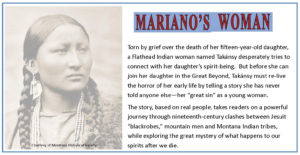
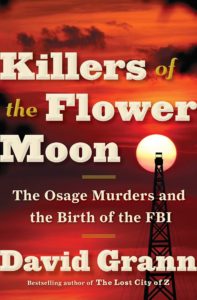 Killers of the Flower Moon
Killers of the Flower Moon
The Osage Murders and the Birth of the FBI
by David Grann
This book is a history that reads like a whodunnit. A page-turner that bring to life one of the most shocking atrocities in Oklahoma history: the murder of Osage Indians by upstanding white citizens to acquire oil rights in the 1920s. Who knew? The Tulsa massacre of Blacks has received a lot of attention recently, but the Osage murders—possible in the hundreds by author David Grann’s account—aren’t even mentioned in the Wikipedia Oklahoma history entry.
This book shines a light on the obscure time period marking the end of the “wild west” and the emergence of modern investigate work of the FBI. Well worth your time.
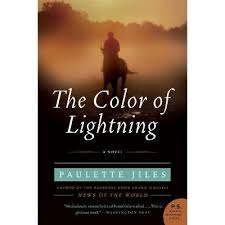
As a writer who has worked to give voice to an Indian woman growing up in 1840s Montana (Mariano’s Woman), I am awestruck by a book I just read entitled The Color of Lightning, by Paulette Jiles. It tells the story of a freed slave named Britt Johnson who hauls his family to Texas after the Civil War only to lose his wife and children to a Kiowa-Comanche raiding party. To get them back, Britt must learn Kiowa bargaining rituals with the help of a Comanche drifter who shares with Britt a love of fine horses. In the process he learns that some young captives, despite the trauma of watching their parents brutally murdered, have no desire to return to “civilization.” (the psychology of captives taken by Indians is the theme of another excellent Jiles book, The News of the World.)
Most of the characters in The Color of Lightning were real people, and the cultures in which they are embedded—Kiowa, Comanche, liberated slave settlements hunkering uneasily among Confederate Texan towns, buffalo soldiers and earnest Quakers volunteering as Indian agents—are rendered with convincing authenticity by Jiles. Yet her characters retain their individuality and unique voices without becoming cultural stereotypes. How she pulls this off is amazing to me. I had to research only three cultures in my book.
Jiles also brings the Texas landscape to life with poetic imagery, and describes the everyday clothes, tools and dwellings of the time period with astonishing historical detail, without detracting from the narrative.
The chapter where Britt re-connects with his injured and sexually brutalized wife is one of the tenderest and most compelling love scenes I have ever read.
This has got to be one of my all-time favorite books.
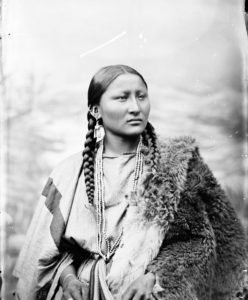
This photo was taken by L. A. Huffman in 1878 at Fort Keogh, Montana, of Pretty Nose, a Cheyenne Woman, courtesy of Montana Historical Society Research Center Archives.
Although the image is not of a Flathead woman, it evoked in me the spirit of Takánsy as I imagine her: strong, proud, yet troubled and unsure about her future.
Takánsy was a real person whose story has always fascinated me. She was born into the Flathead tribe along the Bitterroot River in Montana sometime in the early 1800s, then left her people to marry a French fur trader named Louis Papín. After she was traded to Mariano Medina in 1844 for the substantial price of six horses and six blankets, they set up a successful trading post and stage stop on the Big Thompson River near Loveland, Colorado, known as Mariano’s Crossing.
When her daughter died in 1872, Takánsy was heartbroken. According to historian Zethyl Gates, she would beat her chest and wail, ‘Me sickee, me go to Lena!’ That got me to wondering, which afterlife? Takánsy was both Catholic and Native American. Would she and her daughter be able to connect in the spirit world?
Exploring the great mystery of what happens to our spirits after we die became a theme of the book, along with imagining the events in Takánsy’s girlhood that might have led her to leave her people. That took me on an eye-opening journey through nineteenth-century clashes between Jesuit “blackrobes,” mountain men and Montana Indian tribes.
Mariano’s Woman completes a trilogy that includes Mariano’s Crossing and Mariano’s Choice, all published by Pronghorn Press. The books may be ordered from local bookstores or purchased online on Amazon. Autographed copies are available on my website.
 Readers of my first two historical novels often ask why Takánsy, the Indian wife of Mariano Medina, inflicted scars on her arm for some mysterious reason. Now, with the publication of my third historical novel, Mariano’s Woman, they’ll have an answer.
Readers of my first two historical novels often ask why Takánsy, the Indian wife of Mariano Medina, inflicted scars on her arm for some mysterious reason. Now, with the publication of my third historical novel, Mariano’s Woman, they’ll have an answer.
This new book picks up Takánsy’s story where Mariano’s Crossing ends. Torn by grief over the death of her fifteen-year-old daughter Lena, Takánsy desperately tries to connect with her daughter’s spirit-being. But before she can join Lena in the Great Beyond, Takánsy must re-live the horror of her early life by telling a story she has never told anyone else—her “great sin” as a young woman.
Takánsy was a real person whose story has always fascinated me. She was born into the Flathead tribe along the Bitterroot River in Montana sometime in the early 1800s, then left her people to marry a French fur trader named Louis Papín. After she was traded to Mariano Medina in 1844 for the substantial price of six horses and six blankets, they set up a successful trading post and stage stop on the Big Thompson River near Loveland, Colorado, known as Mariano’s Crossing.
When her daughter died in 1872, Takánsy was heartbroken. According to historian Zethyl Gates, she would beat her chest and wail, ‘Me sickee, me go to Lena!’ That got me to wondering, which afterlife? Takánsy was both Catholic and Native American. Would she and her daughter be able to connect in the spirit world?
Exploring the great mystery of what happens to our spirits after we die became a theme of the book, along with imagining the events in Takánsy’s girlhood that might have led her to leave her people. That took me on an eye-opening journey through nineteenth-century clashes between Jesuit “blackrobes,” mountain men and Montana Indian tribes.
Writing the book was a challenge. Trying to walk in the moccasins of an Indian woman who lived a hundred and eighty years ago leaves one open to accusations of “cultural appropriation.” My desire to connect with people from a different culture, time and place kept me going, along with encouragement from Gray Wolf, a Cheyenne elder, healer and friend.
Mariano’s Woman completes a trilogy that includes Mariano’s Crossing and Mariano’s Choice, all published by Pronghorn Press. The books may be ordered from local bookstores or purchased online on Amazon. Autographed copies are available on my website.
I was so gratified by the latest five-star Amazon customer reviews of my second historical novel, Mariano’s Choice, that in a moment of madness I decided to offer a holiday gift sale: 10% off on each book, or 15% off if you buy both books. You have to order from my website, davidmjessup.com/books, for this discount. For once, my site is cheaper than Amazon!
Here’s one quote from an anonymous reviewer: “I finished reading your latest novel (a Christmas present from my daughter) and loved it! It was so intriguing I couldn’t put it down, finishing it in two days. I found myself reading late into the night, completely engrossed; burning the midnight oil, but at the same time not wanting the story to end.”
Music to an author’s ears.
